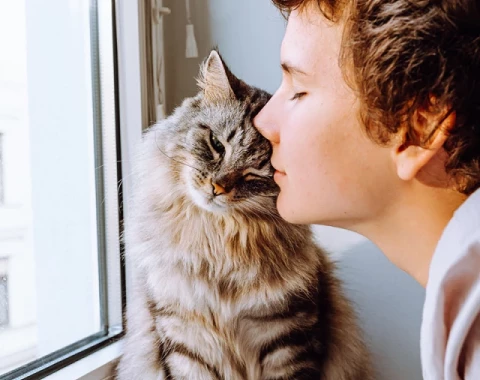African snail (Achatina achatina): The Curious World of the Slow Crustacean
2023-08-28
Інші тварини

The African snail (Achatina achatina) is one of the largest land snails in the world. Its size, unusual colors and peaceful pace of life attract the attention of many lovers of exotic animals.
The African snail comes from western Africa, where it is widespread in countries such as Nigeria, Cameroon and Ghana. Its history goes back centuries, as it has long been viewed by local people as a source of food.
The African snail is a terrestrial species and can tolerate large temperature fluctuations. It is found in a variety of habitats, including rainforests, agricultural areas, and suburban areas. These snails are known to be an invasive species, which means they can have a negative impact on the ecosystems in which they breed. Achatina snails are herbivores and feed on various types of plants, including leaves, fruits and vegetables. African snails are hermaphrodites, which means they have the ability to reproduce both independently and interdependently. They lay eggs from which young snails hatch. They are active mainly at night, when the temperature is lower and the air humidity is higher.African snails are known for their impressive size and unique appearance. The shell of an adult individual can reach a length of 20 to 30 centimeters. Their shells are usually various shades of brown and green, but may also have light or dark spots. The shells have a characteristic spiral pattern.
Achatina The Achatina is sometimes kept as a pet, but breeding requires certain skills and an understanding of its needs. African snails need a spacious cage or terrarium to provide them with adequate space to move around. Air humidity is crucial, so you need to maintain appropriate humidity levels. Feeding the African snail is quite simple, but you need to provide it with a variety of plants. You need to take care of the appropriate temperatures because they are sensitive to low temperatures. If more than one African snail is kept, there is a risk that they may breed, which can lead to overpopulation problems.
The African snail is a fascinating animal, but breeding it as a pet requires commitment and consideration of all the needs that must be met to provide it with appropriate living conditions. You must also always comply with local regulations regarding the breeding of exotic animals.
The African snail comes from western Africa, where it is widespread in countries such as Nigeria, Cameroon and Ghana. Its history goes back centuries, as it has long been viewed by local people as a source of food.
The African snail is a terrestrial species and can tolerate large temperature fluctuations. It is found in a variety of habitats, including rainforests, agricultural areas, and suburban areas. These snails are known to be an invasive species, which means they can have a negative impact on the ecosystems in which they breed. Achatina snails are herbivores and feed on various types of plants, including leaves, fruits and vegetables. African snails are hermaphrodites, which means they have the ability to reproduce both independently and interdependently. They lay eggs from which young snails hatch. They are active mainly at night, when the temperature is lower and the air humidity is higher.African snails are known for their impressive size and unique appearance. The shell of an adult individual can reach a length of 20 to 30 centimeters. Their shells are usually various shades of brown and green, but may also have light or dark spots. The shells have a characteristic spiral pattern.
Achatina The Achatina is sometimes kept as a pet, but breeding requires certain skills and an understanding of its needs. African snails need a spacious cage or terrarium to provide them with adequate space to move around. Air humidity is crucial, so you need to maintain appropriate humidity levels. Feeding the African snail is quite simple, but you need to provide it with a variety of plants. You need to take care of the appropriate temperatures because they are sensitive to low temperatures. If more than one African snail is kept, there is a risk that they may breed, which can lead to overpopulation problems.
The African snail is a fascinating animal, but breeding it as a pet requires commitment and consideration of all the needs that must be met to provide it with appropriate living conditions. You must also always comply with local regulations regarding the breeding of exotic animals.
:
RaV




